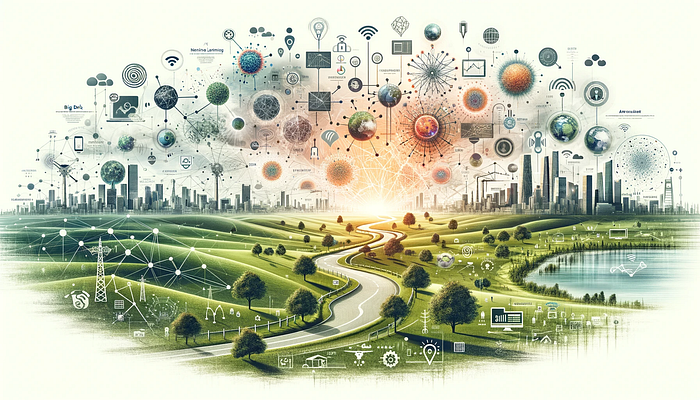
https://medium.com/@alex_tolson/the-future-of-mapping-top-5-technologies-to-watch-in-2024-d1e96fe65372
Alex Tolson | Co-founder of swyvl.io
·
3 min read
·
Dec 19, 2023

The Future of Mapping in 2024 | Image created using DALL-E 3
As 2023 draws to a close, the world of mapping and spatial data stands on the brink of a revolution. The upcoming year, 2024, is poised to introduce groundbreaking technologies that will redefine how we view and interact with maps. This article explores the top 5 advanced mapping techniques set to transform the industry.
Watch an in-depth analysis on the Top 5 Mapping Technologies for 2024
First on our list are Artificial Intelligence and Machine Learning. These technologies are more than just tools; they are revolutionizing the way we process and interpret spatial data. AI algorithms excel in analyzing complex datasets quickly and efficiently, making them ideal for tasks like terrain analysis, pattern recognition, and predictive modeling in mapping. Machine Learning, a subset of AI, is invaluable in identifying patterns and making predictions, crucial for forecasting environmental changes or urban development. The profound impact of AI and ML is evident in applications like autonomous vehicles and environmental studies, where they aid in navigation and disaster prediction, respectively.
Next, we delve into Neural Radiance Fields (NeRFs) and Gaussian Splatting. These groundbreaking techniques in 3D rendering and visualization offer unparalleled depth and clarity in mapping. NeRFs use deep learning to create highly realistic 3D models from 2D images, capturing light and producing lifelike scenes. Gaussian Splatting, meanwhile, enhances the quality and detail of 3D maps, crucial in geospatial applications. These technologies open new possibilities for exploration, education, and planning by creating detailed virtual environments and high-resolution terrain models.
In the midst of exploring the latest in mapping technologies, it’s worth mentioning a project close to our hearts — Swyvl. Our venture into developing Swyvl, our innovative 3D mapping platform, has been driven by a clear vision: to simplify the complex. As we’ve navigated the evolving landscape of mapping, the necessity for a platform that effortlessly brings together collaboration, data integration, and sharing became evident. Swyvl is our response to this need, offering an intuitive solution that enhances mapping projects, big and small. It’s more than a tool; it’s our contribution to the future of mapping.